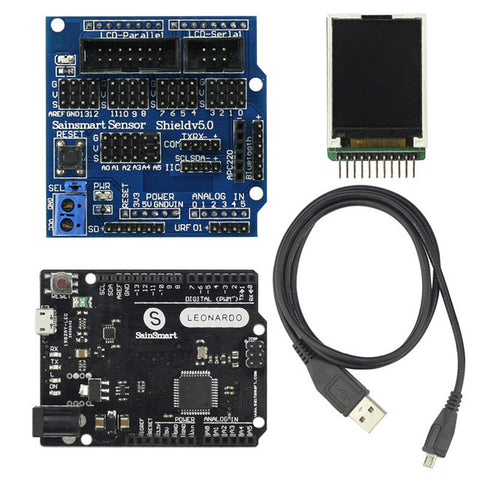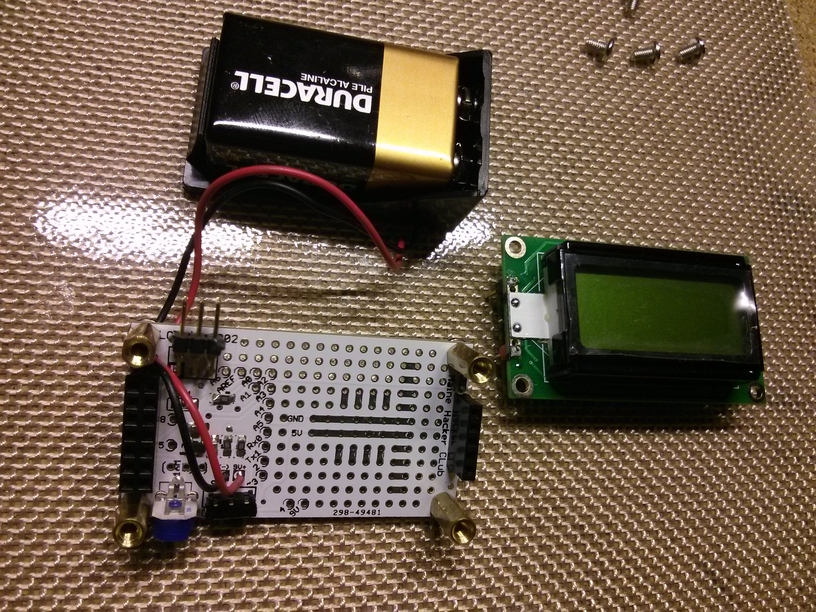

Acording to this tutorial I should connect some pins on LCD screen to ICSP pins on Leonardo but I don't have equipment to do it. Since the Arduino Uno doesnt have an attached display, youll need a. I want to connect the Arduino TFT LCD 1.77' screen to an Arduino Leonardo.

Read/Write (R/W): Selects reading mode or writing mode. Register Select (RS) pin: Controls where in the LCD's memory you're writing data to. Contrast pin (Vo): Control the display contrast.
#Arduino leonardo lcd display code
Drag and drop these components onto the canvas, and instantly get a list of secondary parts, wiring instructions and a test code for your circuit. The parallel interface consists of the following pins: Power Supply pins (Vss/Vcc): Power the LCD. The primary components for this circuit are: Arduino Leonardo with Headers and LCD 16x2.
#Arduino leonardo lcd display how to
It has 20 digital input/output pins (of which 7 can be used as PWM outputs and 12 as analog inputs), a 16 MHz crystal oscillator, a micro USB connection, a power jack, an ICSP header, and a reset button. A sketch is the term you use for a program that you can upload to a board. Learn how to wire the LCD 16x2 to Arduino Leonardo in a few simple steps. Used: /home/ae4ml/Arduino/libraries/LiquidCrystal_I2C-1.1. The Arduino Leonardo is a microcontroller board based on the ATmega32u4. A potentiometer on the back allows you to adjust the contrast of the display.I setup the cable and loaded a test program. Then connect the 5V of Arduino to the VDD of the LCD module.


This display has jumpers for configuring its address on the bus between 0x20 and 0x27. Compatible with Arduino/Genuino UNO, Leonardo, Mega, 101 (Intel Curie), Micro, Nano, Mini I2C Address:0x20-0x27(0x20 default) Back lit (Blue with white. First, connect the ground of Arduino to the VSS of the LCD. as long as each peripheral has a unique address on the bus. The advantage of an I2C bus is that it allows you to connect several peripherals on the same bus. Now connect Rotary Encoder with Arduino UNO and LCD display as shown in the below circuit diagram. Its designed for people who want to get up and running with Arduino without having to. The Esplora differs from all preceding Arduino boards in that it provides a number of built-in, ready-to-use set of onboard sensors for interaction. The I2C interface on the back uses a 2.54mm impaction, which allows the use dupont connectors to make connections on breadboard (or directly on an Arduino). The Arduino Esplora is a microcontroller board derived from the Arduino Leonardo. It is also well known that the fewer the wires, the easier the connection. The LiquidCrystal library allows you to control LCD displays that are compatible with the Hitachi HD44780 driver. Resistive touch screen TFT LCD, 4inch, 480x320 resolution Standard Arduino interface, compatible with development boards like : Arduino UNO, Leonardo, UNO PLUS. This type of LCD display is very widespread in Arduino projects but unfortunately consumes a lot of Inputs/Outputs, hence the interest of an I2C backpack allowing to reduce four-wire connections (SDA and SCL, ground and power supply) between Arduino and I2C display. Here is a white liquid crystal display on a blue background of 2 lines with 16 characters each. A LCD 16x2 display with I2C interface for Arduino & Pyboard projects


 0 kommentar(er)
0 kommentar(er)
